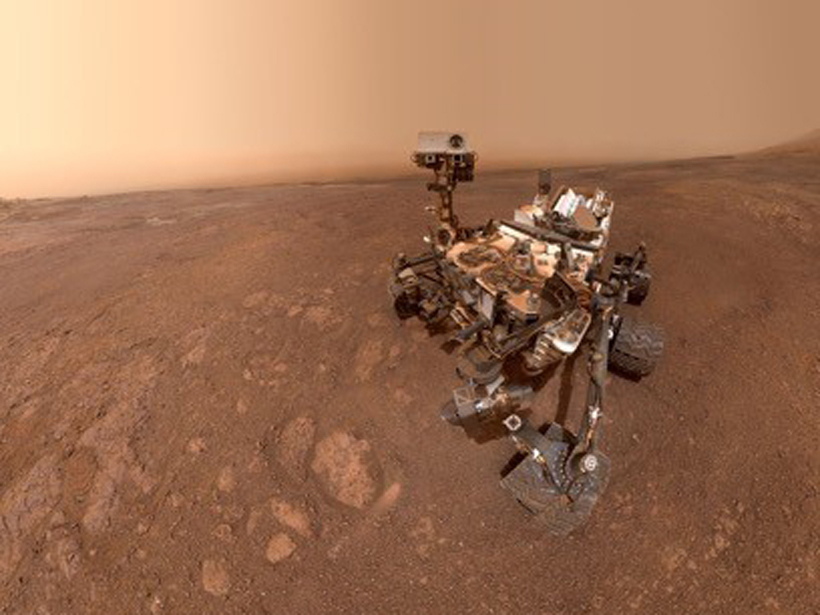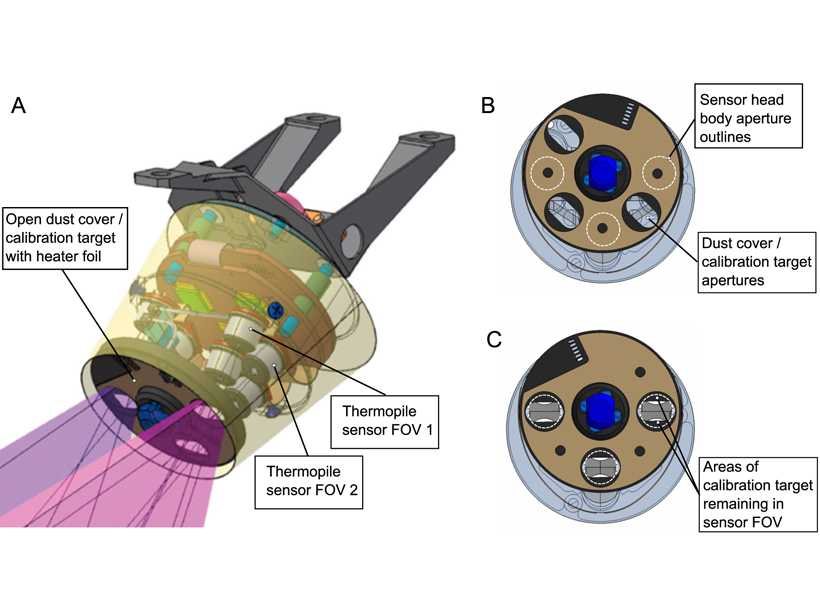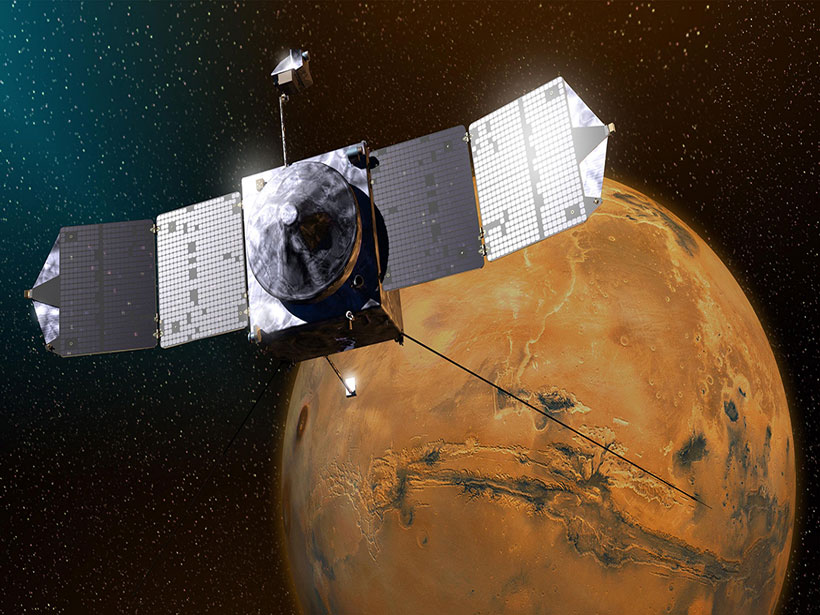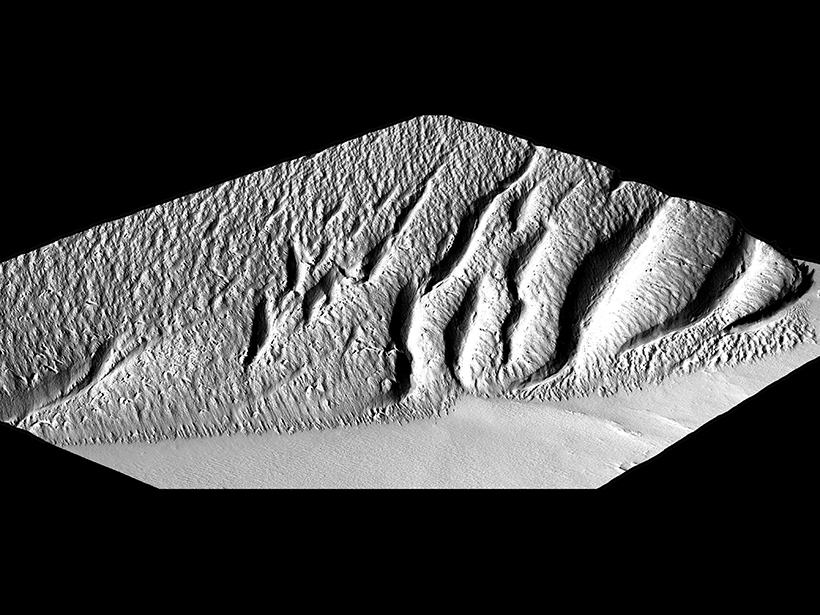The movement of large sand ripples, documented for the first time, suggests Mars is windier than we thought.
Mars
Curiosity Solves the Mystery of Gale Crater’s Hematite Ridge
A new special issue of JGR: Planets details the water-rich history of a distinctive geomorphic feature on Mars dubbed Vera Rubin ridge, as investigated by the Curiosity rover.
Insights from Calibration of the HP³ Radiometer on InSight
A detailed analysis of Heatflow and Physical Properties Package Radiometer on the Mars InSight lander, including changing instrument sensitivity and calibration coefficients.
Who Wants to Count All the Craters on Mars? Not Me!
Humans found hundreds of thousands of craters on Mars greater than 1 kilometer in diameter, but now computers automate the process delivering crater counts as well as geologically meaningful ages.
A Month of Milestones for Mars Missions
Mars launch season has arrived, and it brings the first space exploration mission from the Arab world, China’s first Mars landing, and the first powered flight on another planet.
Mars 2020 Team Using Australian Rocks in Search for Life on Mars
Scientists are investigating evidence of ancient terrestrial microbes preserved in Australia as well as mineral maps derived from Mars orbiter data to shed light on how to search for life on Mars.
Desert Microbes Mine for Water
Scientists studying a cyanobacterium isolated from rock samples in the Atacama Desert found out how the bacteria extract water to live. Their results may help identify likely sites for life on Mars.
Lifting the Veil on Martian Dust Storms
A special collection in JGR Planets presents insights from a long-awaited global dust storm on Mars in 2018 that was closely scrutinized by five orbiting and two landed spacecraft.
A Longer-Lived Magnetic Field for Mars
New research indicates Mars’s dynamo may have been active for millions of years longer than previously thought.
Scientists Float a New Theory on the Medusae Fossae Formation
Pumice-like rafts of lightweight material could have carried volcanic debris across an ancient Martian ocean to build one of the most puzzling features on the Red Planet.










